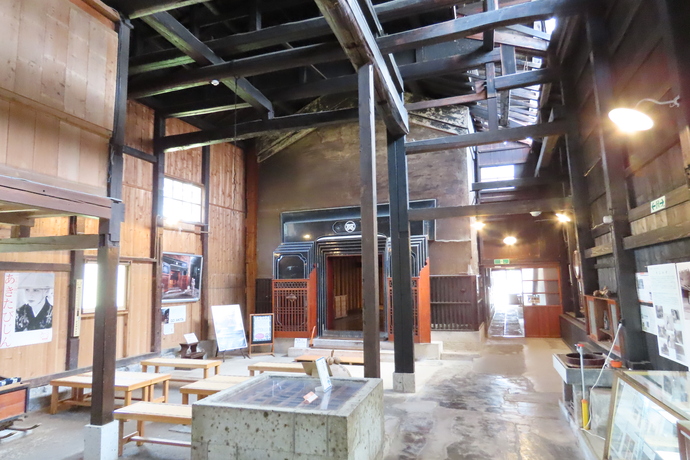Uchigura, Then and Now
Uchigura, Then and Now
As many as 30 of the residences within Masuda’s Preservation District for Groups of
Traditional Buildings still contain interior storehouses (uchigura), some of which are
over a century old. Such storehouses were constructed in response to a burst of
economic prosperity that began in the mid-nineteenth century. The precursors of
uchigura were fire-resistant exterior storehouses that served as places to store food,
tools, and other products related to a merchant’s trade. After the merchants of Masuda
began to connect their storehouses to their main residences using an exterior roof, the
utilitarian structures were eventually incorporated into the living space.
Each uchigura in Masuda is the heart of a home, both in placement and function. Long
beams that hold the outer roof in place rest on the sturdy uchigura, creating a solid
structure that can withstand the region’s heavy snowfall. In the late 1800s, many
merchants built uchigura that included a second floor. This divided the storehouse to
create a living space on the first floor, where the family would gather or entertain
guests, and a second-floor space for storing valuables, utensils, furniture, and clothes.

A residence’s kitchen and other additional living spaces were typically located between
the uchigura and the storefront. The kitchen often included a well or water pump so that
residents had access to water without leaving the house, which was especially valuable
in winter. According to older residents of the town, these large merchant homes
regularly housed as many as 20 people, including the family members, servants, and
employees of the shop. Accordingly, the uchigura would often be the one area of the
house reserved exclusively for use by the family or head of the household.
Today, many of the families that own Masuda’s uchigura have opened them to the
public. Other uchigura have been repurposed as businesses, and one now serves as the
local tourism information center. One residence is now a restaurant where customers
can learn about the importance of fermentation in the local food culture of Masuda. In
total, as many as 50 uchigura are known to still exist, and many are open to visitors.
Among these is an uchigura that has been in the Satō family for 13 generations.
Constructed in the mid-1800s, the residence contains a unique misegura, a style in
which the storefront is located inside the uchigura. The Satō residence is registered as
an Important Cultural Property of Japan.
This English-language text was created by the Japan Tourism Agency.
このページに関するお問い合わせ
商工観光部観光おもてなし課観光企画係
〒013-8601 横手市中央町8番12号(かまくら館5階)
電話:0182-32-2118 ファクス:0182-36-0088
お問い合わせフォームは専用フォームをご利用ください。



